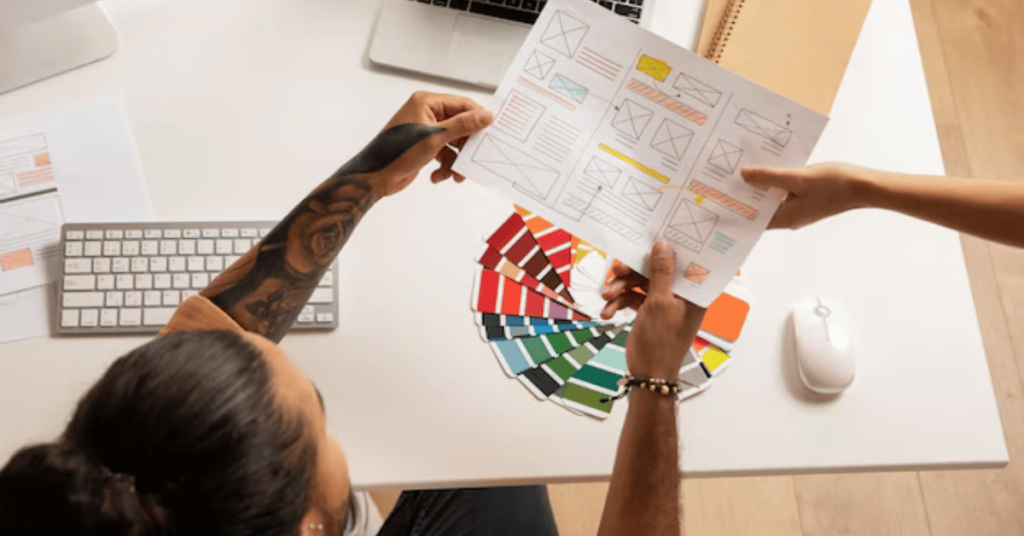The year 2023 has brought an abundance of creative trends and motifs that have significantly influenced various industries, including design, fashion, marketing, and art. A motif, in its simplest form, is a recurring theme or element that holds symbolic meaning. From bold graphics in branding to intricate patterns in textiles, motifs act as the underlying language that ties creativity to cultural movements and trends. The 2023 motif checklist is a guide for professionals and enthusiasts alike to keep track of the prevailing themes that have made their mark this year.
This article dives deep into key motifs for 2023, their applications, cultural significance, and why they matter. Whether you are a designer, marketer, or simply someone fascinated by trends, this checklist will serve as a valuable resource.
Key Motifs of 2023
1. Nature Reimagined
Description: Nature-inspired motifs continue to dominate, but 2023 introduces a twist—a reimagining of organic elements with surreal, digital, or exaggerated features. Think glowing mushrooms, pixelated flowers, or technicolor landscapes.
Applications:
- Fashion: Bold prints of abstract foliage and futuristic flora.
- Interior Design: Wallpapers featuring bioluminescent plant patterns.
- Digital Media: Graphic designs combining real-world textures with digital enhancements.
Cultural Significance: This motif reflects society’s evolving relationship with nature amidst technological advancement and environmental concerns. It captures a blend of escapism and hope for sustainable futures.
2. Retro Futurism
Description: The blend of retro aesthetics with futuristic technology creates a nostalgic yet forward-looking appeal. Neon grids, vaporwave color schemes, and 1980s-style robotic elements are prominent.
Applications:
- Gaming and Animation: Visuals featuring vintage computer graphics and sci-fi worlds.
- Fashion: Metallic fabrics, holographic materials, and geometric accessories.
- Marketing: Ad campaigns using retro fonts and cyberpunk visuals.
Cultural Significance: This motif taps into collective nostalgia while reflecting optimism about future technological innovation. It’s both a nod to the past and a projection of what lies ahead.
3. Maximalist Botanicals
Description: Unlike the minimalist trends of recent years, 2023’s botanicals embrace vibrant colors, oversized patterns, and lush detailing.
Applications:
- Textile Design: Curtains, rugs, and upholstery featuring bold floral patterns.
- Graphic Design: Packaging and branding with rich botanical imagery.
- Art Installations: Immersive displays resembling exaggerated gardens.
Cultural Significance: Maximalist botanicals signify a cultural shift toward indulgence and joy, counteracting the restrained aesthetics of past years. They emphasize abundance and vitality.
4. Celestial Themes
Description: Cosmic imagery, constellations, and celestial bodies are trending across multiple creative fields. This motif integrates dreamy visuals with mystical undertones.
Applications:
- Jewelry Design: Pieces adorned with stars, moons, and planetary symbols.
- Stationery: Planners and notebooks with celestial prints.
- Digital Art: Backgrounds and themes featuring galaxies and constellations.
Cultural Significance: The fascination with celestial motifs ties to humanity’s eternal quest for meaning and wonder. In a chaotic world, these motifs provide a sense of peace and connectedness.
5. Abstract Geometry
Description: Bold and irregular geometric shapes take center stage in 2023. These motifs are often layered, textured, or combined with gradients to create depth.
Applications:
- Architecture: Buildings with angular designs and facades.
- Apparel: Clothing with asymmetrical patterns and striking geometric prints.
- Web Design: Dynamic layouts featuring abstract shapes and flowing patterns.
Cultural Significance: Abstract geometry reflects a move toward unconventional thinking and breaking away from rigid structures. It’s symbolic of creativity and innovation.
6. Mindful Minimalism
Description: Minimalism in 2023 takes on a deeper purpose. Designs focus on intentionality, simplicity, and serenity rather than sheer reductionism.
Applications:
- Interior Design: Spaces with neutral tones and functional furniture.
- Product Design: Items that combine aesthetics with utility.
- Branding: Clean, uncluttered logos and packaging.
Cultural Significance: Mindful minimalism addresses the societal need for calm and clarity amidst fast-paced lifestyles. It’s about finding beauty in simplicity with meaning.
7. Cultural Fusion
Description: Motifs that merge elements from diverse cultures, creating designs that celebrate global interconnectedness.
Applications:
- Textiles: Fabrics combining patterns from different heritages.
- Digital Content: Illustrations inspired by cross-cultural symbolism.
- Events: Themes that honor multicultural influences.
Cultural Significance: This motif highlights the beauty of diversity and promotes inclusivity. It resonates with the increasingly globalized nature of contemporary society.
8. Dark Academia
Description: A motif rooted in intellectualism and vintage aesthetics. Key elements include moody tones, antique patterns, and scholarly imagery.
Applications:
- Fashion: Plaid skirts, tailored blazers, and earthy hues.
- Interior Design: Spaces with dark woods, leather-bound books, and vintage art.
- Social Media: Content that romanticizes learning and literary pursuits.
Cultural Significance: Dark academia speaks to the yearning for depth and authenticity in a digital age dominated by surface-level interactions.
9. Techno-Organics
Description: The fusion of technological and organic elements creates motifs that are both futuristic and rooted in nature. Examples include circuits resembling vines or robotic interpretations of natural forms.
Applications:
- Fashion: Wearable tech with organic designs.
- Architecture: Structures incorporating biomimicry principles.
- Graphics: Logos and visuals that blend digital and natural aesthetics.
Cultural Significance: This motif mirrors the integration of technology into daily life while acknowledging the importance of maintaining a connection to the natural world.
10. Whimsical Nostalgia
Description: Playful and nostalgic motifs that evoke childhood memories and simpler times. Cartoonish illustrations, pastel palettes, and quirky patterns define this trend.
Applications:
- Toys: Designs with retro aesthetics and bright colors.
- Marketing: Campaigns that use nostalgic elements to appeal to emotions.
- Stationery: Cute, whimsical prints for everyday items.
Cultural Significance: This motif offers a sense of comfort and joy, providing a mental escape in challenging times.
Creating Your Own Motif Checklist
Step 1: Understand Your Purpose
Before selecting motifs, identify the purpose behind your designs or projects. Are you creating for marketing, storytelling, or functional design?
Step 2: Research Trends
Explore platforms like Pinterest, Behance, and Instagram for inspiration. Observe how motifs are used in different industries.
Step 3: Mix and Match
Combine motifs to create unique designs. For example, pairing celestial themes with abstract geometry can yield stunning results.
Step 4: Stay True to Your Brand
Ensure that the motifs align with your identity and values. Authenticity resonates more with audiences than trend-chasing.
Step 5: Test and Iterate
Experiment with prototypes, gather feedback, and refine your designs. Motifs should evolve based on the audience’s response.
Conclusion
The 2023 motif checklist highlights a fascinating blend of nature, technology, nostalgia, and cultural awareness. Each motif reflects broader societal changes and individual desires, making them not just visually appealing but deeply meaningful. Whether you’re an artist, designer, or simply trend-savvy, understanding these motifs can enrich your creative projects and resonate with your audience.
FAQs
1. What is a motif?
A motif is a recurring design element, theme, or symbol that carries symbolic meaning and is used across various forms of art and design.
2. Why are motifs important in design?
Motifs add depth and cohesion to designs. They convey messages, evoke emotions, and create memorable visual identities.
3. How do I choose the right motif for my project?
Start by understanding the purpose and audience of your project. Research trends and consider combining motifs for unique results 2023 motif checklist.
4. What industries benefit most from motif trends?
Industries like fashion, interior design, branding, and digital media heavily rely on motifs to communicate aesthetics and values.
5. Are motifs culturally significant?
Yes, motifs often carry cultural significance by reflecting traditions, beliefs, and societal changes.
6. Can I create my own motif?
Absolutely! By blending inspiration with personal creativity, you can craft unique motifs that resonate with your audience and align with your vision 2023 motif checklist.







